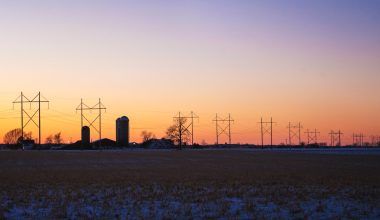If you’re a music lover or someone venturing into the world of creating music, you’ve probably come across the term EP. It’s short for “Extended Play” and sits comfortably between a single and a full album in terms of length. But how many songs are actually on an EP? Let’s dive in and explore this fascinating format in the music industry.
What Is an EP?
Before we count the songs, let’s understand what an EP is. In simple terms, an EP is a musical release that is longer than a single but shorter than an album. It’s a compact way for artists to showcase their work without committing to the length of a full album. Historically, the EP format was introduced as a way to give fans a taste of an artist’s music without the investment of time or money required for an album.
Why Choose an EP?
Artists often choose to release an EP for several reasons. First, it’s cost-effective. Producing fewer songs means less time in the studio, which reduces expenses. Second, it’s a great way to test the waters. Emerging artists use EPs to introduce their style to an audience without overwhelming them. Third, even established artists use EPs to experiment with new sounds or concepts without committing to a full-length album.
So, How Many Songs Are on an EP?
Typically, an EP contains 4 to 6 songs. However, there isn’t a strict rule. The number can vary depending on the artist’s creative vision, the music’s length, and industry standards. For example, if the songs are longer than average, you might find an EP with only three tracks. On the flip side, shorter songs could allow for an EP with seven or even eight tracks.
The general consensus, though, is that an EP should run between 15 to 30 minutes in total. If it’s longer than 30 minutes, it might start edging into album territory. Keep this in mind if you’re an artist planning your next release.
How Does an EP Differ from an Album?
At first glance, an EP and an album might seem similar. Both are collections of songs, after all. But albums are usually more extensive, often containing 8 to 15 songs or running over 30 minutes. Albums also tend to have a cohesive theme or concept, whereas EPs might be more exploratory in nature.
How Does an EP Differ from a Single?
On the other end of the spectrum is the single. As the name suggests, singles typically feature just one song, although they might include a B-side or remix. EPs bridge the gap between these two formats, giving artists more space to express themselves than a single, but without the commitment of an album.
Famous EPs and Their Song Counts
Let’s look at some well-known EPs to get a better understanding:
- The Weeknd’s “My Dear Melancholy,” has 6 tracks, running for about 21 minutes.
- BTS’s “Love Yourself: Her” contains 9 tracks, but it’s often classified as a mini-album due to its length.
- Billie Eilish’s “Don’t Smile at Me” features 8 songs, blurring the lines between an EP and an album.
These examples show how flexible the EP format can be. While there are general guidelines, artists can interpret them to suit their creative needs.
Why Are EPs So Popular?
In today’s music landscape, EPs have become increasingly popular. Streaming platforms have made it easier than ever to release shorter collections of music, and audiences appreciate the digestible format. Plus, in a world where attention spans are shorter, an EP offers just the right amount of content to keep listeners engaged.
How Do You Decide the Number of Songs for Your EP?
If you’re an artist planning an EP, deciding the number of songs is a crucial step. Here are a few things to consider:
- Purpose: What’s the goal of your EP? Are you showcasing your range, telling a story, or experimenting with a new style?
- Length: Remember the 15-30 minute guideline. This will help you determine how many songs you need.
- Content: Focus on quality over quantity. It’s better to have four strong tracks than six mediocre ones.
Are There Rules for EPs?
While there are industry norms, there’s no strict rulebook for EPs. Some artists stick to the 4-6 song range, while others push boundaries. Ultimately, it’s about what serves the music best. The key is to create a cohesive experience for listeners, whether that’s with four songs or seven.
How to Market Your EP
Releasing an EP is just the beginning. To make an impact, you’ll need a solid marketing plan. Start by sharing teasers on social media and releasing a single from the EP to generate buzz. Collaborating with influencers, bloggers, or playlist curators can also help your music reach a wider audience.
The Evolution of EPs
The concept of the EP has evolved significantly over time. In the vinyl era, EPs were literally extended plays—longer than a single but shorter than a full record. Today, the term is more flexible, adapting to the digital age. Whether it’s a few tracks uploaded to Spotify or a physical release, the essence of an EP remains the same: a snapshot of an artist’s work.
Final Thoughts
EPs are a versatile and valuable format in the music industry. Whether you’re an artist exploring your sound or a listener looking for fresh tunes, EPs offer a perfect balance. So, the next time someone asks, “How many songs are on an EP?” you’ll know the answer—and so much more. With 4 to 6 songs being the sweet spot, EPs are a gateway to creativity, experimentation, and connection in the world of music.
For further reading, explore these related articles:
- Circles Post Malone Lyrics – A Song About Love, Loss, and Life
- Billie Eilish’s Big Moment at the Oscars 2022: A Night to Remember
For additional resources on music marketing and distribution, visit DMT Records Pvt. Ltd..






